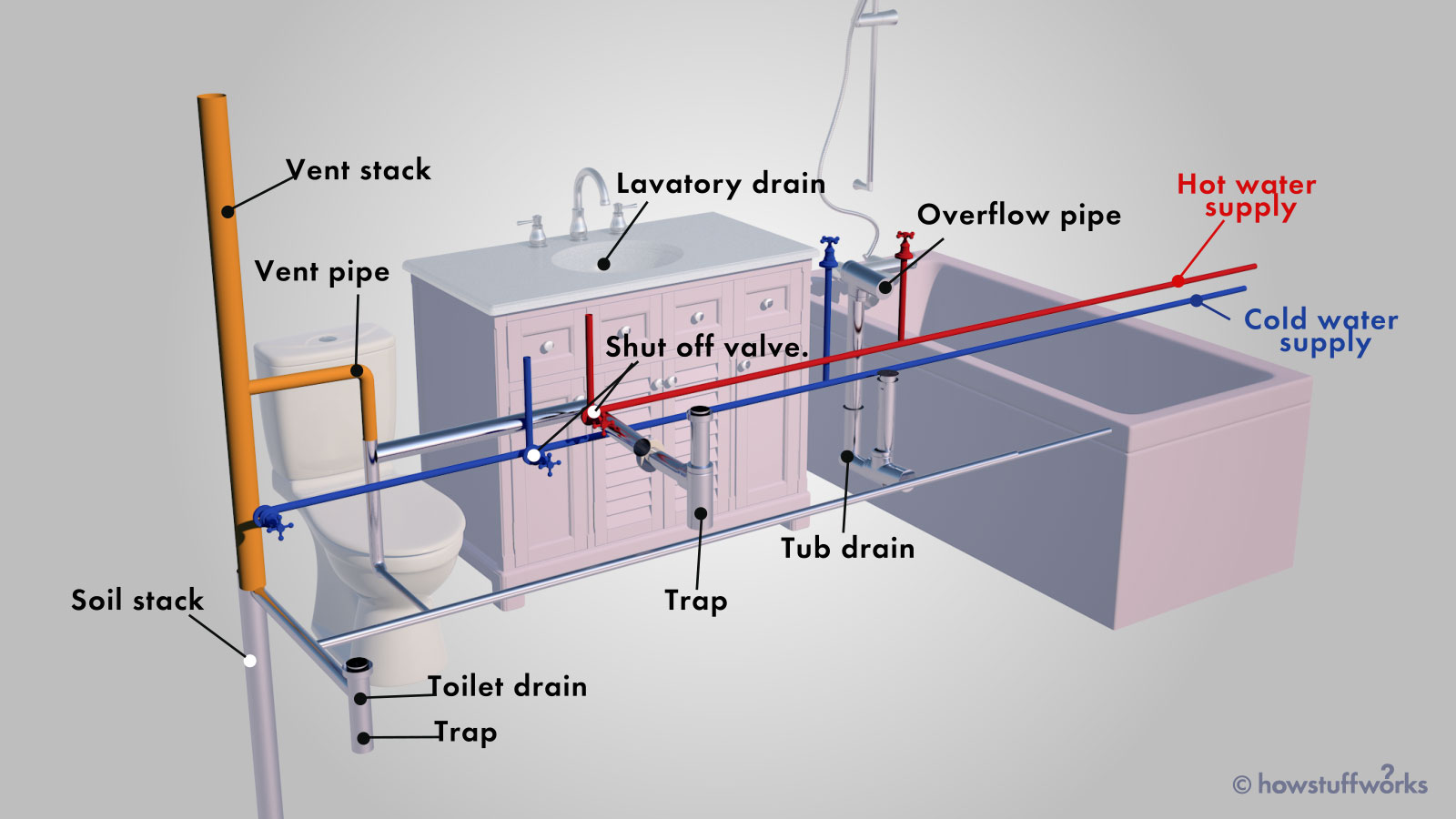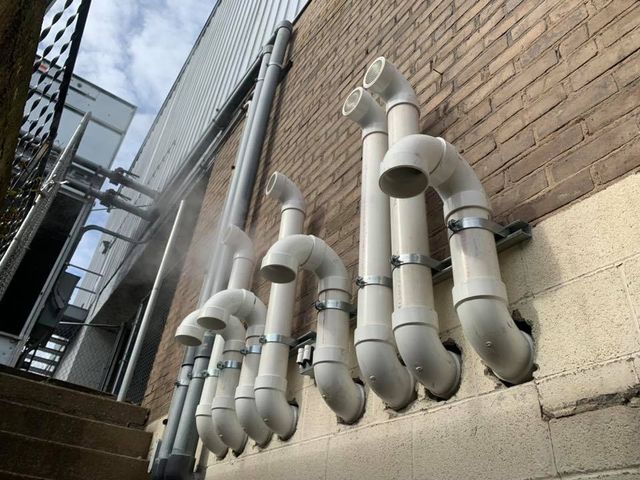Breaking Down Your House's Plumbing System Anatomy
Breaking Down Your House's Plumbing System Anatomy
Blog Article
What're your ideas on Exploring Your Homes Plumbing Anatomy?

Comprehending exactly how your home's plumbing system works is vital for every single homeowner. From providing clean water for alcohol consumption, food preparation, and bathing to securely removing wastewater, a well-maintained plumbing system is critical for your family members's wellness and convenience. In this detailed guide, we'll discover the complex network that makes up your home's pipes and offer ideas on maintenance, upgrades, and handling usual concerns.
Intro
Your home's plumbing system is greater than simply a network of pipes; it's a complicated system that ensures you have accessibility to clean water and effective wastewater elimination. Recognizing its parts and how they work together can help you prevent expensive fixings and make sure every little thing runs efficiently.
Standard Elements of a Pipes System
Pipes and Tubing
At the heart of your plumbing system are the pipelines and tubing that lug water throughout your home. These can be made of various products such as copper, PVC, or PEX, each with its benefits in regards to resilience and cost-effectiveness.
Fixtures: Sinks, Toilets, Showers, etc.
Fixtures like sinks, commodes, showers, and bathtubs are where water is utilized in your home. Comprehending how these fixtures link to the plumbing system assists in identifying troubles and preparing upgrades.
Shutoffs and Shut-off Points
Shutoffs control the circulation of water in your pipes system. Shut-off valves are critical throughout emergency situations or when you require to make repairs, permitting you to separate parts of the system without interrupting water flow to the entire home.
Water System System
Main Water Line
The primary water line connects your home to the community water system or a private well. It's where water enters your home and is dispersed to numerous fixtures.
Water Meter and Stress Regulatory Authority
The water meter procedures your water use, while a pressure regulator makes certain that water flows at a safe pressure throughout your home's pipes system, preventing damage to pipes and components.
Cold Water vs. Hot Water Lines
Comprehending the distinction in between cold water lines, which provide water directly from the primary, and warm water lines, which bring heated water from the water heater, assists in troubleshooting and preparing for upgrades.
Drainage System
Drain Pipeline and Traps
Drain pipelines carry wastewater far from sinks, showers, and commodes to the sewage system or septic system. Traps stop sewer gases from entering your home and additionally catch particles that could trigger obstructions.
Air flow Pipes
Ventilation pipes allow air into the water drainage system, avoiding suction that might reduce drainage and create catches to vacant. Correct ventilation is necessary for keeping the integrity of your pipes system.
Importance of Proper Drain
Ensuring correct drainage avoids back-ups and water damage. On a regular basis cleaning drains pipes and keeping catches can prevent pricey repairs and expand the life of your pipes system.
Water Heating Unit
Sorts Of Hot Water Heater
Water heaters can be tankless or typical tank-style. Tankless heaters warmth water on demand, while tanks save warmed water for prompt usage.
Exactly How Water Heaters Link to the Plumbing System
Recognizing just how hot water heater link to both the cold water supply and hot water distribution lines helps in diagnosing concerns like not enough warm water or leaks.
Maintenance Tips for Water Heaters
Frequently flushing your hot water heater to remove sediment, checking the temperature setups, and checking for leakages can prolong its lifespan and enhance energy performance.
Typical Plumbing Problems
Leakages and Their Reasons
Leaks can take place due to maturing pipelines, loose installations, or high water pressure. Dealing with leaks without delay stops water damage and mold growth.
Blockages and Blockages
Obstructions in drains pipes and toilets are commonly caused by purging non-flushable items or a build-up of oil and hair. Using drainpipe screens and bearing in mind what drops your drains can stop clogs.
Indicators of Pipes Problems to Expect
Low tide stress, slow-moving drains pipes, foul odors, or uncommonly high water expenses are signs of possible plumbing problems that ought to be dealt with without delay.
Pipes Upkeep Tips
Routine Examinations and Checks
Schedule annual pipes examinations to catch concerns early. Search for signs of leakages, rust, or mineral accumulation in faucets and showerheads.
DIY Maintenance Tasks
Straightforward tasks like cleansing tap aerators, checking for commode leaks making use of dye tablets, or shielding revealed pipes in cool climates can stop significant plumbing concerns.
When to Call a Specialist Plumbing Technician
Know when a pipes issue needs specialist experience. Attempting complex repair services without proper understanding can bring about even more damage and higher fixing costs.
Upgrading Your Plumbing System
Reasons for Updating
Updating to water-efficient fixtures or changing old pipelines can improve water quality, decrease water bills, and boost the value of your home.
Modern Plumbing Technologies and Their Benefits
Check out technologies like wise leak detectors, water-saving bathrooms, and energy-efficient water heaters that can conserve cash and decrease environmental effect.
Price Considerations and ROI
Calculate the upfront costs versus long-lasting financial savings when taking into consideration pipes upgrades. Several upgrades spend for themselves via lowered utility bills and fewer fixings.
Ecological Effect and Conservation
Water-Saving Fixtures and Home Appliances
Installing low-flow taps, showerheads, and toilets can dramatically minimize water use without sacrificing efficiency.
Tips for Decreasing Water Usage
Basic practices like dealing with leaks quickly, taking much shorter showers, and running complete loads of laundry and recipes can conserve water and lower your energy expenses.
Eco-Friendly Plumbing Options
Consider lasting plumbing materials like bamboo for flooring, which is durable and environmentally friendly, or recycled glass for countertops.
Emergency situation Preparedness
Actions to Take During a Pipes Emergency
Know where your shut-off shutoffs are located and just how to shut off the water supply in case of a burst pipeline or major leak.
Significance of Having Emergency Situation Get In Touches With Helpful
Keep call info for local plumbings or emergency situation solutions readily available for quick feedback during a pipes dilemma.
DIY Emergency Situation Fixes (When Appropriate).
Temporary solutions like making use of air duct tape to spot a leaking pipeline or putting a container under a dripping tap can minimize damages until a specialist plumbing professional arrives.
Verdict.
Recognizing the composition of your home's plumbing system encourages you to preserve it efficiently, conserving money and time on repair work. By complying with regular upkeep routines and staying notified about modern-day pipes modern technologies, you can ensure your pipes system runs successfully for years ahead.
Exploring Your Homes Plumbing Anatomy
Water Supply System
Main Water Line: This is where water enters your home from the municipal supply or a private well. Water Meter: Typically located near where the main water line enters the property, it measures the amount of water used. Shutoff Valve: It s crucial to know where this is in case of emergencies. It allows you to turn off the water supply to the entire house. Pipes and Fittings: These distribute water throughout your home. Materials can include copper, PVC, or PEX. Drain-Waste-Vent (DWV) System
Drains: Located in sinks, showers, and tubs, these carry wastewater away. Traps: U-shaped pipes under sinks that hold standing water, blocking sewer gases from entering the home. Vents: Pipes that lead from the DWV system to the outside, preventing vacuum formation and allowing gases to escape. Sewer Line: Carries all wastewater from the home to the municipal sewer system or a septic tank. Fixtures and Appliances
Sinks, Toilets, and Showers Dishwashers and Washing Machines Water Heaters Maintenance Tips
Regularly check for leaks in exposed pipes and around fixtures. Inspect the water heater annually for signs of wear. Clean drains and traps to prevent clogs and odors. Know how to shut off water to individual fixtures. When to Call a Professional
Major leaks or burst pipes Installation of new pipes or fixtures Septic tank issues Remodeling projects that involve plumbing changes Conclusion
Understanding the anatomy of your home's plumbing is key to maintaining a functional and efficient system. Regular checks and knowing when to call in the experts can save you time, money, and stress.
https://www.mavyn.com/blog/exploring-your-homes-plumbing-anatomy

As a devoted reader about The Inner Workings of Your Home's Plumbing, I think sharing that piece of content was smart. Sharing is good. Helping people is fun. I appreciate reading our article about Plumbing Installation 101: All You Need to Know.
Hire A Pro Report this page